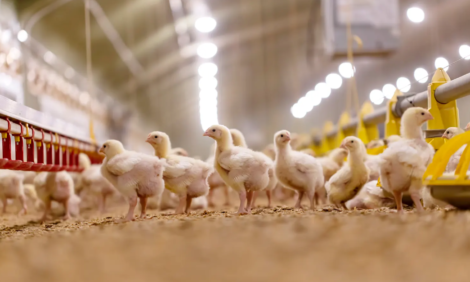



Where do mallards nest, raise ducklings in region full of people?
Mallard populations in the northeastern US have plummetedTracy Rittenhouse will perform novel research to improve understanding of how mallards live in Connecticut's diverse areas through a grant from CT DEEP.
Ducks floating on ponds or waddling by the water are a common sight throughout Connecticut. But changes to the state’s land use over the past few decades have left these animals in an uncertain position.
Tracy Rittenhouse, associate professor in the Department of Natural Resources and the Environment in the College of Agriculture, Health, and Natural Resources, has received a $100,000 grant from the Connecticut Department of Energy and Environmental Protection to study mallard nesting ecology.
The mallard is the most abundant duck species in North America. The males of the species are immediately recognizable from their iridescent green heads. However, since the late 90s, their populations in the northeastern U.S. have been steadily dropping. The number of breeding mallards in the region has plummeted from nearly 800,000 in 1998 to about 450,000 in 2017.
Meanwhile, these birds’ numbers have remained relatively stable in eastern Canada indicating there is something amiss in this region of the U.S.
During this time, the northeastern U.S. has become significantly more urbanized. Monitoring data shows breeding pairs of mallards occur in rural, suburban, and urban areas of Connecticut. Yet, the details about how mallards live in these areas are unknown.
Rittenhouse hypothesizes that low reproductive success in one or more of these areas could be contributing to the mallards’ declining numbers.
Rittenhouse’s study will quantify several measures of reproductive success for mallards. Rittenhouse and her team will estimate annual nest success and describe nest site characteristics. Nest success is defined as a nest where the eggs hatch and at least one duckling successfully leaves the nest, in other words, fledges the nest. They will incorporate measures of success with habitat characteristics such as if the nest is in an urban or rural area.
The team will use also attach GPS backpacks to the adult females to study brood rearing habits and habitat use as the recently fledged ducklings follow the female. They will be able to estimate the survival of female mallards during the nesting and post-fledging periods and also determine where ducklings hide from predators when they first leave the nest.
Rittenhouse will also look at if and how hens whose nests fail engage in “molt migration,” or migration north where there are fewer predators with which birds have to contend while molting.
Rittenhouse will study these measures in a range of housing densities in order to capture a full picture of these birds’ diverse habitats and habits.
This study will provide important details about where ducklings are born and survive within urbanized areas. This critical information will support efforts to ensure Mallards remain a common species.








